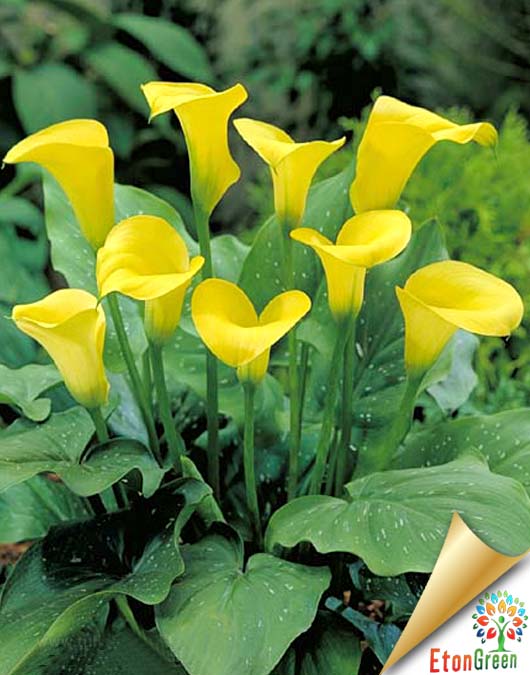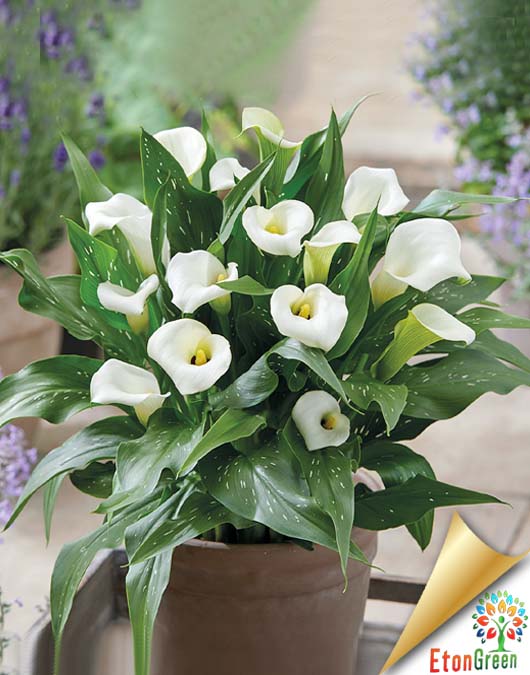- Shipping charge ₹ 90 for entire order
- While they’re best known as supremely long-lasting cut flowers, Calla Lilies also make fantastic container and landscape plants! Speckled foliage and gorgeous blooms add a touch of elegance wherever they go, and despite their graceful appearance, they’re remarkably easy to grow!
- calla lily is a favored for its beautiful, showy flowers Height ranges from 3 feet.
- For container planting, select a container with adequate drainage holes and fill it with good quality, well-draining soil. Almost any commercially available potting mix will do the trick.
- For outdoor landscape planting, select a spot with well-drained soil where your Calla Lilies will receive filtered light or moderate shade.
- Dig holes and plant the tubers shallowly (no more than 4” deep) with the eyes facing upwards and the tops barely covered with soil or even slightly exposed.
- Water thoroughly after planting, gently soaking the soil to settle it around the tubers.
-
Calla Lily Tips & Tricks
- Snip a few flowers for bouquets or other cut arrangements while in bloom. Doing so will not hurt your plants and having graceful, long-lasting blooms to bring indoors is one of the best reasons to grow Callas.
- Expect roots and top sprouts to form in the fall in warmer regions, with flowers emerging in the spring and summer.
- Amend poorly draining soil with organic material to raise the level 2–3″ and improve drainage as Callas will not thrive in waterlogged soil. Compost, finely ground bark, or composted manure all work a charm and are widely available.
- Examine your tubers and discern where the growing points, or “eyes,” are located. They should be planted with the eyes facing upwards.




